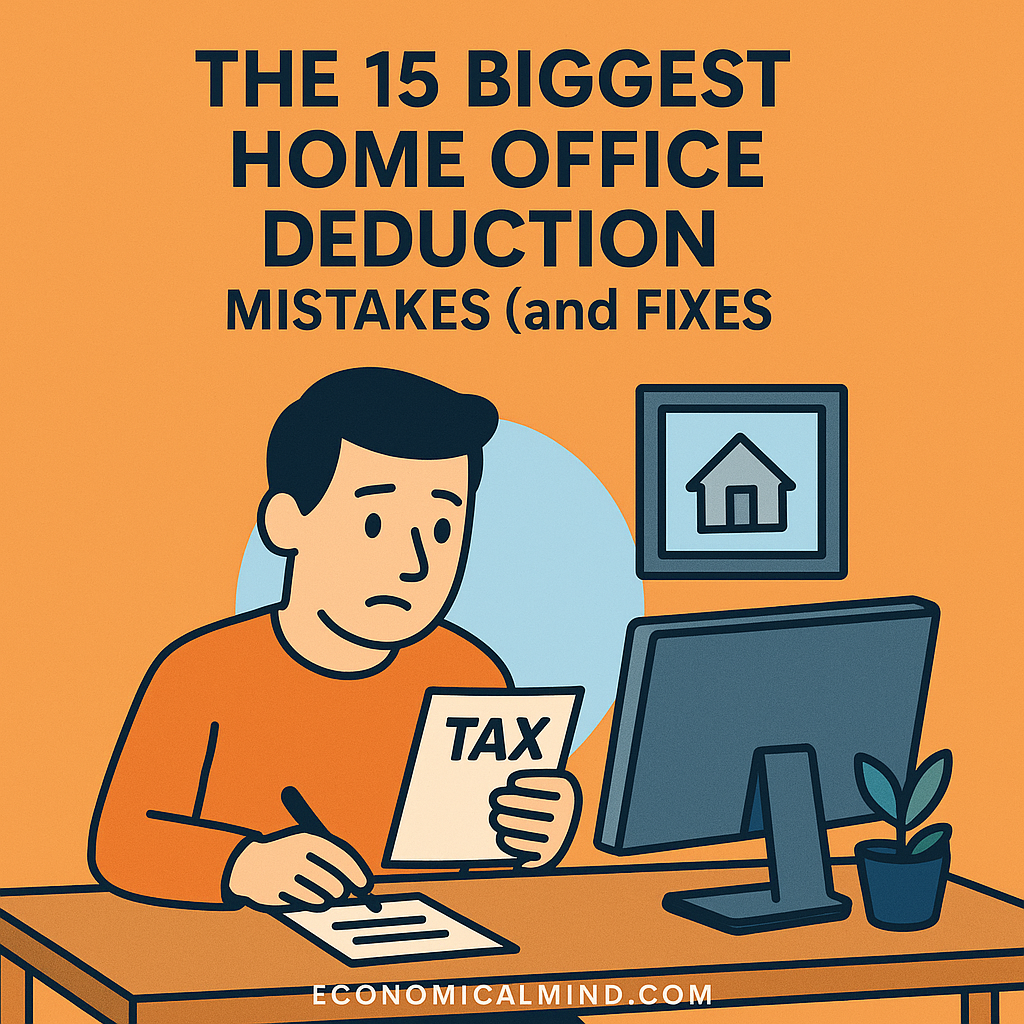
Working from home has its perks — including potential tax deductions. But the IRS rules for home office deductions can be confusing, and small mistakes often lead to audits, disallowed claims, or missed savings. Here are the most common errors people make and how to fix them.
1. Claiming the Entire House
Only the space used exclusively for work qualifies. Claiming your whole home is a red flag.
Fix: Measure your workspace precisely and claim only the portion used for business.
2. Mixing Business and Personal Use
A kitchen table doesn’t count as a dedicated office. The space must be used only for work.
Fix: Create a clearly defined area in your home that’s solely for business activities.
3. Forgetting About Simplified Options
The IRS offers a simplified deduction method many freelancers overlook.
Fix: Use the simplified $5 per square foot method if tracking expenses is too complicated.
4. Ignoring the Regular Use Rule
If you work from your home office only occasionally, it might not qualify.
Fix: Make sure you use the space regularly and primarily for your business.
5. Miscalculating Square Footage
Eyeballing measurements leads to errors that can cost you deductions or trigger audits.
Fix: Measure your workspace carefully and document it with notes or a quick sketch.
6. Forgetting Utility Splits
Electricity, internet, and water can all be partially deductible — but only in proportion to your office size.
Fix: Calculate your office’s share of household utilities and keep records of all bills.
7. Double-Claiming Expenses
Some people deduct the same expense twice under different categories.
Fix: Track every deduction carefully and ensure each cost is claimed once.
8. Including Non-Qualified Renovations
Upgrading your kitchen doesn’t count, even if you sometimes work there.
Fix: Only deduct improvements directly related to your home office space.
9. Forgetting About Depreciation
If you own your home, you can deduct a portion of its depreciation.
Fix: Use IRS Form 8829 or accounting software to calculate allowable depreciation.
10. Not Keeping Documentation
Without records, even valid deductions can be denied.
Fix: Save receipts, utility bills, and photos of your office setup for at least three years.
11. Overlooking Rent or Mortgage Interest
Many forget that a portion of these major expenses may qualify.
Fix: Apply your office percentage to rent, mortgage interest, and property taxes (if applicable).
12. Misunderstanding Self-Employment vs. W-2 Rules
Employees who work from home can’t always claim the same deductions as self-employed individuals.
Fix: Check your status — deductions for W-2 workers were mostly eliminated after 2018.
13. Failing to Adjust Each Year
If your office size or business income changes, your deduction should too.
Fix: Recalculate your deduction annually to stay accurate.
14. Ignoring State Tax Differences
Some states have additional or different home office rules.
Fix: Review your state’s tax laws or consult a tax professional before filing.
15. Not Asking for Professional Help
DIY tax software can miss important details.
Fix: If your situation is complex, hire a CPA to review your home office deduction.
Key Takeaway
The home office deduction is a powerful tax saver when done right — but it’s also one of the easiest to mess up. Avoid these 15 mistakes to keep your deductions clean, compliant, and profitable.
